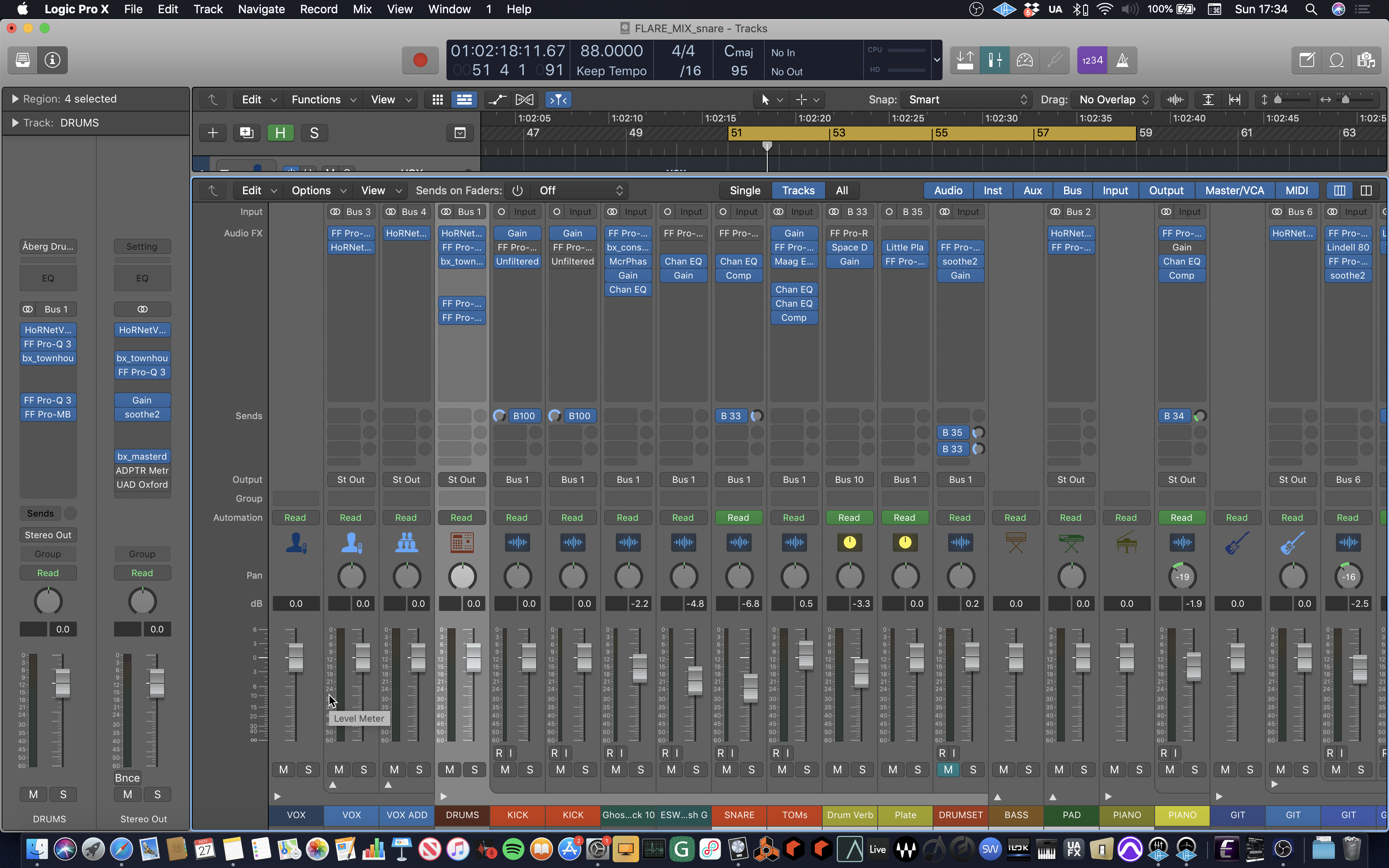Music Production#
Music production is a multi-dimensional creative process. It encompasses developing, creating and refining recorded material into a body of finished work. This defines the entire life cycle of a piece of music. From composition to sound recording and editing through to mixing and mastering. Mixing is just a single role in the music production process and often takes place after the recording and editing of a song. After the process of mixing, a mastering stage is often undertaken to apply the final steps necessary for distribution.
Mixing#
Mixing can be loosely defined as the process of taking recorded tracks and blending them together. Tracks are blended using various processes facilitated by audio effects processing such as equalization, compression, distortion and various spatial effects such as reverberation. The goal of mixing various elements together is to subjectively create a mix by adjusting levels, panning, frequency content and dynamics via various audio effects. A mix goes through a life cycle as seen in the screenshots taken from our session. We demonstrate some of these principles using the song Flare by the Swedish band Isolate. Figure \ref{logicmix} shows Apple Logic Pro’s mix page for the song which includes faders for adjusting relative levels between instruments and panpots for adjusting panorama of sounds within the stereo field. In our videos that accompany this tutorial we illustrate this point with the adjustment of the aforementioned parameters along with the manipulation of Equalisation (EQ), Dynamic Range Compression (DRC) and Reverberation. In addition, in the following sections, we will introduce the mixing tools from the standpoint of signal processing.

Fig. 1 Multitrack mixing session in the Logic Pro digital audio workstation.#
Aesthetics#
Taste, preference and emotional context are key determinants in the choices that are made when mixing music. Mixing is an interdisciplinary task where technical considerations are made in conjunction with creative, artistic or aesthetic decisions. It is common practice for one action to inform the other, mapping a technical parameter space to a semantic or emotional space is a motivational factor when creating a mix. In the practical demonstration which forms a key part of our tutorial we try to communicate such challenges and creative thought processes. See \citet{izhaki2017mixing} for a comprehensive discussion on the virtues and benefits of creative thinking in the mix workplace.
Semantics#
Semantic descriptors are often used as a way of communicating ideas in the context of a mix. Articulating audio specific terms and descriptive language such as punchy, warm or aggressive from a technical perspective is a challenge for all audio engineers. Learning such actions In the context of intelligent mixing systems is somewhat problematic for similar reasons. \citet{deman2017ten}, \citet{moffat2019approaches}, and \citet{lefford2021context} have separately discussed these challenges from varying perspectives. \citet{stables2014safe} proposes a system for semantic feature extraction where descriptors are taken from adapting parameters in audio effect plugins. This is also discussed in our videos.
